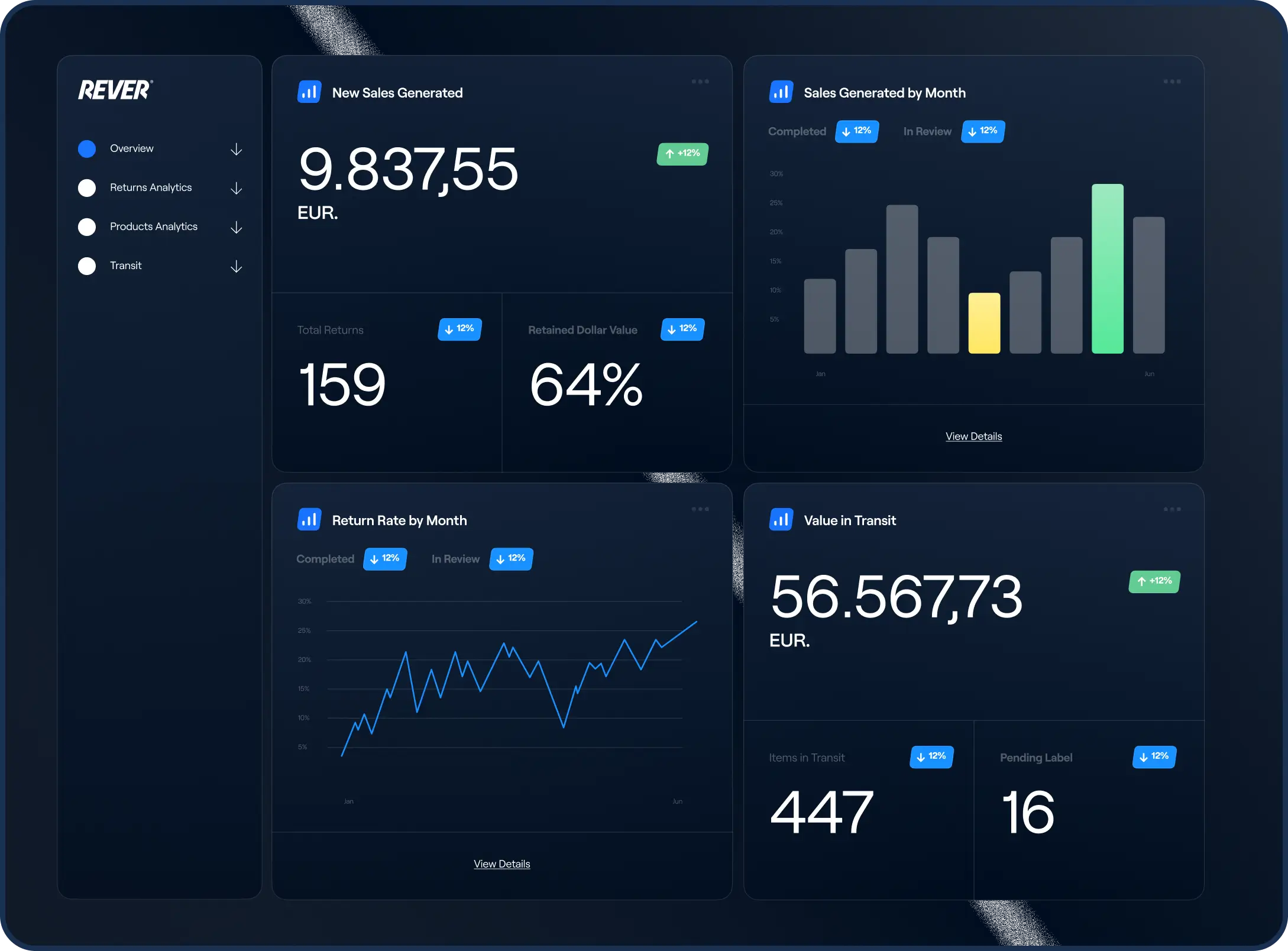





features
What makes us the best option
REVER accelerates your sales so your growth is unstoppable. We unlock the hidden data in your customers’ habits, providing AI-powered guidance that brings returns down to zero.
products
what we offer
REVER App
We allow shoppers to return any package from any shop in just 2 clicks. Amazon? Nike? You name it. With REVER App you can return anything you want instantly


REVER Protect
Eliminate returns and refunds and protect your shipments. Item lost? Damaged? We take care of it with our insure-tech product

Order Tracking
Track all your orders in real time in a single place. Using REVER tracking technology your shoppers can track in real time all their orders and do anything from there.

benefits
proven results for your brand
75%
less customer support needed


90%
increase in customer satisfaction

47%
fewer returns

30%
cheaper returns
FAQs
REVER is a returns management solution designed to streamline the returns process for e-commerce businesses. It offers fast, frictionless, and sustainable returns, helping to improve customer satisfaction, reduce operational costs, and increase overall efficiency.
By providing a seamless and convenient returns process, REVER ensures that your customers have a positive experience when returning products, leading to increased customer loyalty and repeat purchases
REVER integrates seamlessly with popular e-commerce platforms such as Shopify, WooCommerce, Magento, and PrestaShop. Our team will work closely with you to ensure a smooth integration process and provide the necessary guidance and support.
Yes, REVER supports international returns. Our platform is designed to handle returns from customers around the world, providing a consistent and efficient returns experience for your global customer base.
REVER automates many aspects of the returns process, such as tracking, processing, and managing customer inquiries. By providing self-service options and real-time updates, customers can easily track their return status, reducing the need for support tickets.







